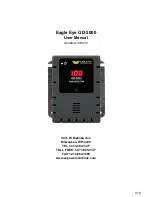
Page 18
TDI SL
Owner’s Manual
ence. Sub-gram gold nuggets are often only detectable at the
lowest delay setting while larger nuggets, even of the same
alloy, can be detected at higher delay settings. This is largely
due to skin effect, whereby the response of small thin targets
dissipates quickly.
A good exercise is to experiment with different targets at
different
Pulse Delay
settings. This is best done with the
Ground
Balance
switched off so that all targets sound the same (no two-
tone response) and the sensitivity to the target can be more eas-
ily observed. After you determine how the
Pulse Delay
affects
the signal, you can try the same tests with the
Ground Balance
turned on and the
Target Conductivity
to
All
to see whether the
target produces a high tone or a low tone. You can then choose
Low
or
High
to eliminate or accept a target.
In some soils the minimum pulse delay cannot be used.
Notably wet salt soil (such as a saltwater surf zone) behaves
like a low-conductor target and will respond regardless of the
Ground Balance
setting. Increasing the
Pulse Delay
to about
15
s will eliminate wet salt response. However, as you move
out of the surf zone onto dry sand remember you can reduce the
Pulse Delay
to maximize sensitivity as dry salt sand does not
cause a problem. Areas with high concentrations of black sand
may also require an increase in the
Pulse Delay
.
Any changes to the
Pulse Delay
setting affects the ground
balance point so the TDI will need to be re-balanced.
Dual Field Coil
With any metal detector, the size of the search coil presents
a trade-off between depth and sensitivity. A larger coil offers
better depth on larger targets at the expense of small-target sen-
sitivity, and a smaller coil has better sensitivity to small targets,
but at a lesser depth.
Detectable gold nuggets can range from several grains to
multiple ounces, so a coil that offers both depth and sensitivity
would be ideal. TDI uses a patented dual field (DF) coil which







































